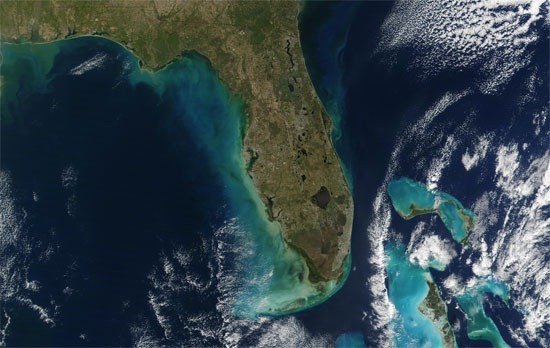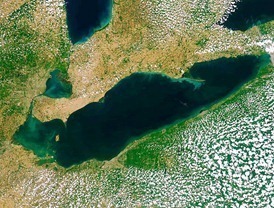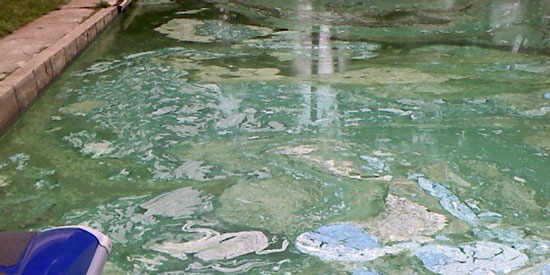Lake Superior Phosphorus Lows Spur Algae
0Too much phosphorus is typically a problem for freshwater systems, but in Lake Superior, the issue is a different one: It seems that there is too little phosphorus in the biggest of the Great Lakes.
Scientists from Environment Canada are dissecting the issue by looking at what they believe to be associated effects in the St. Mary’s River that separates Michigan from the Canadian Province of Ontario.
In this outlet, the scientists are finding large blooms of “rock snot” algae, more precisely identified as Didymosphenia geminata. This type of algae mostly thrives in the absence of high phosphorus levels, but the researchers think climate change factors may also be a contributor to its presence.

Palisade Head on the North Shore of Lake Superior. (Credit: U.S. Environmental Protection Agency via Wikimedia Commons)
Lake Superior has always been the least fertile of the Great Lakes, but the existence of rock snot algae in a prominent outlet of the lake may mean that its fertility may be dropping even more. Data collected by Environment Canada scientists are so far backing up the trend. These are gathered mostly from sediment sample analyses revealing that levels of phosphorus in the lake are so low that they are almost non-detectable.
The levels are so low that researchers struggle to explain them. A few things that could be at play include a decrease in farming activity throughout Minnesota and Wisconsin, as well as changes in farming practices like more conservation tillage. A rise in the number of sewage treatment plants around Lake Superior in the past half century may also be a factor.

Didymosphenia geminata, or “rock snot” algae. (Credit: Wikimedia Commons User David Perez via Creative Commons 3.0)
Other researchers out of the University of Minnesota – Duluth are looking into the drops in phosphorus affecting Lake Superior. They say that much higher-resolution phosphorus measuring tools are needed to confirm a link between the rise of rock snot algae in the St. Mary’s River and the lake’s low phosphorus. This is because the algae seems adept at responding to even small declines in phosphorus.
To dispel another proposed cause for the algae off the lake’s eastern end, scientists say that it shouldn’t be seen as an invading species. For some time, experts had assumed that unsuspecting stream anglers were helping to transport the algae species to new areas around the lake.
University of Minnesota scientists now say that Didymo algae is likely present naturally in many waters because it is appearing in waterways virtually untouched by fishing. It likely depends on conditions in the waterways it inhabits, including shifts in phosphorus levels and other factors, to start producing large colonies.
Are low phosphorus levels in Lake Superior to blame for rises in “rock snot” algae? What other factors could be contributing to its expansion? Please consider leaving a comment to share your thoughts.













